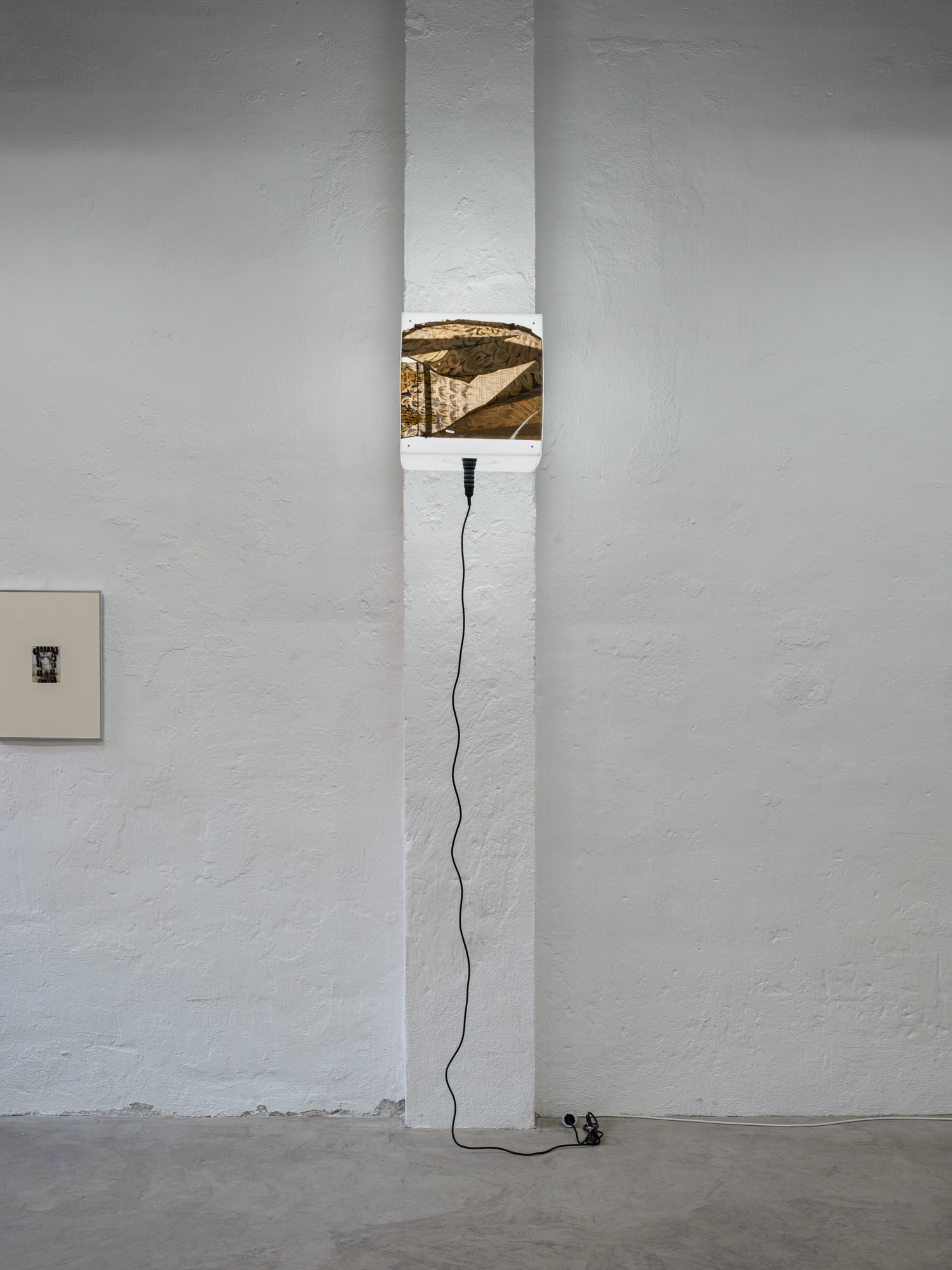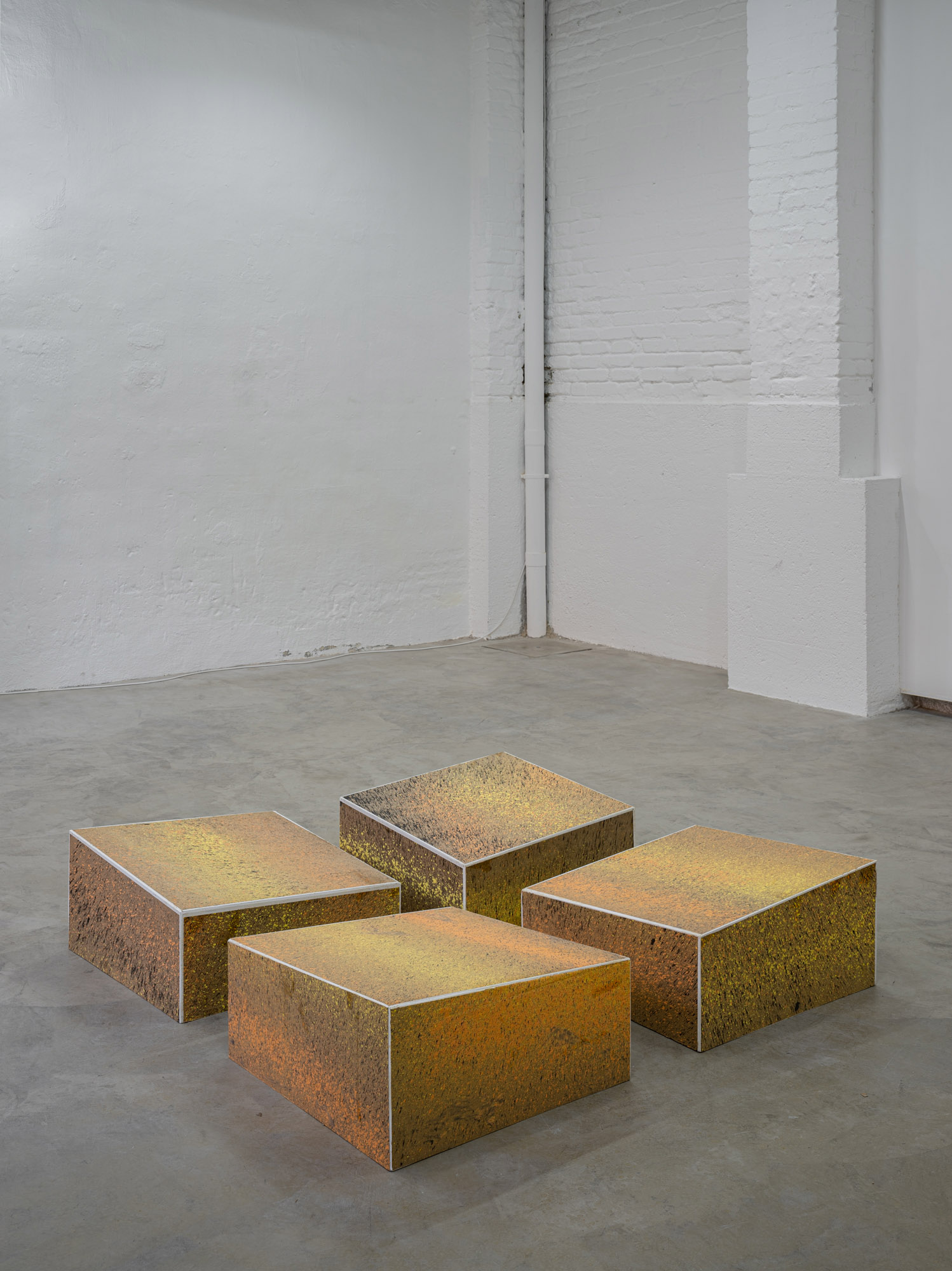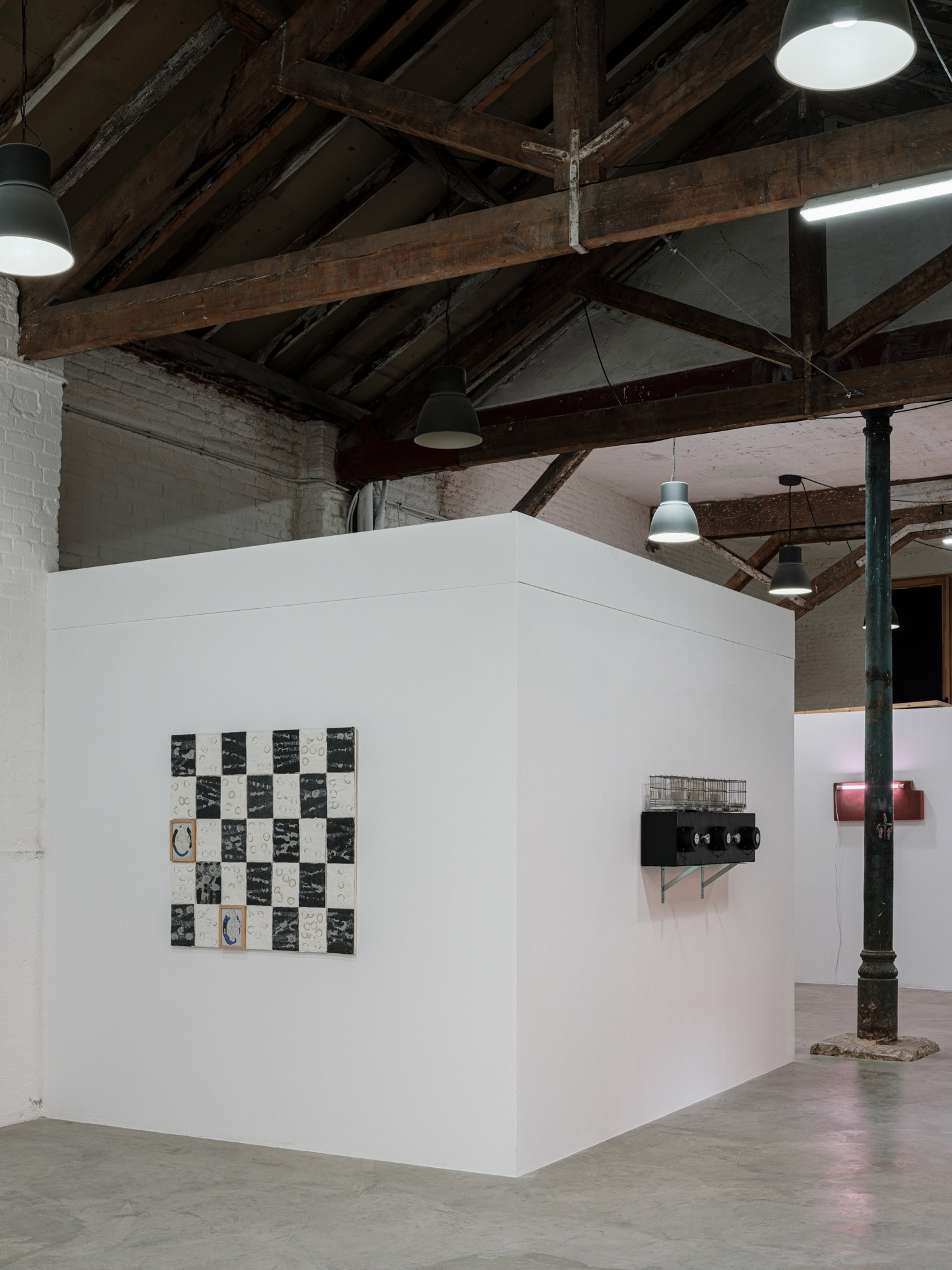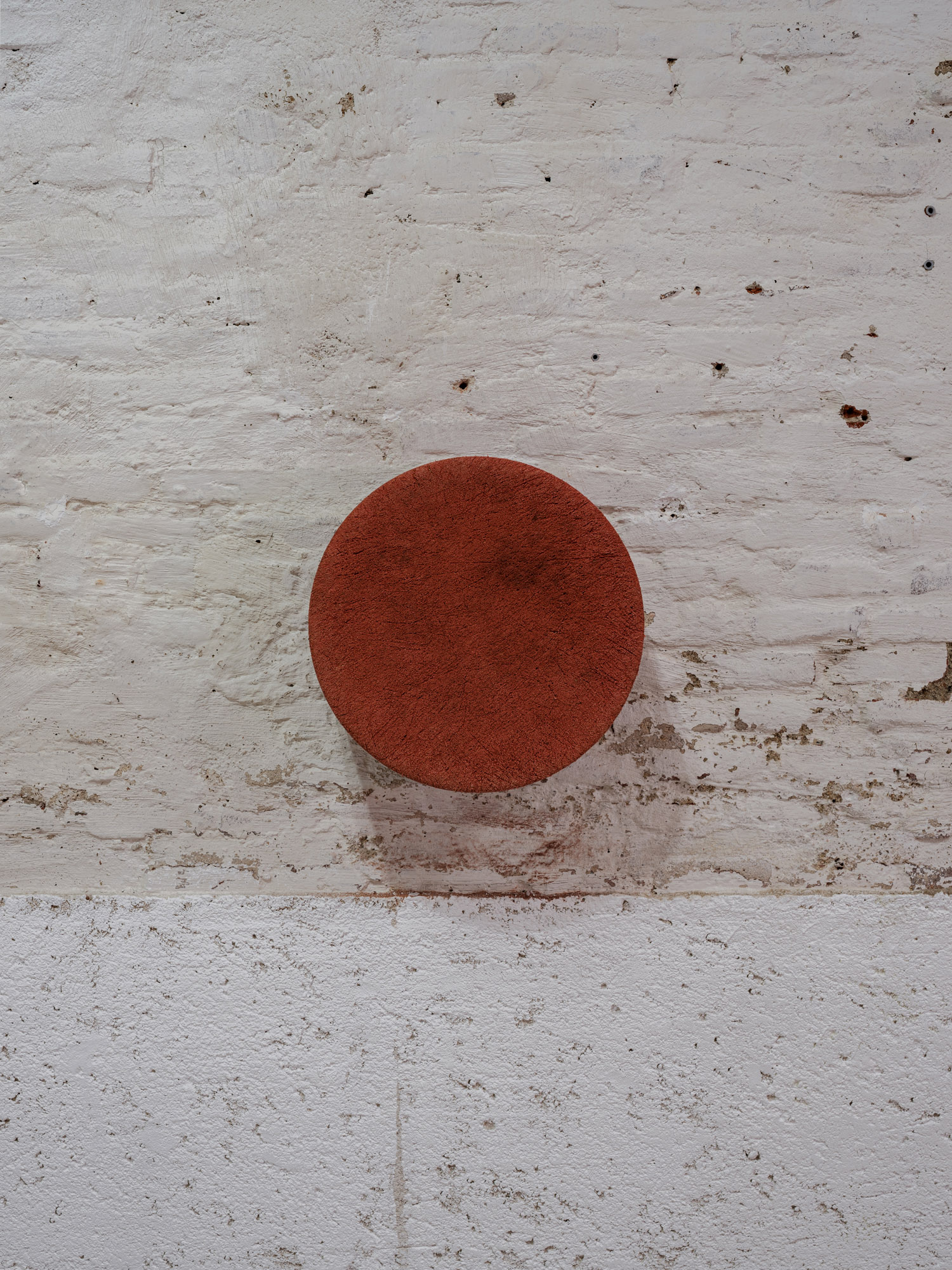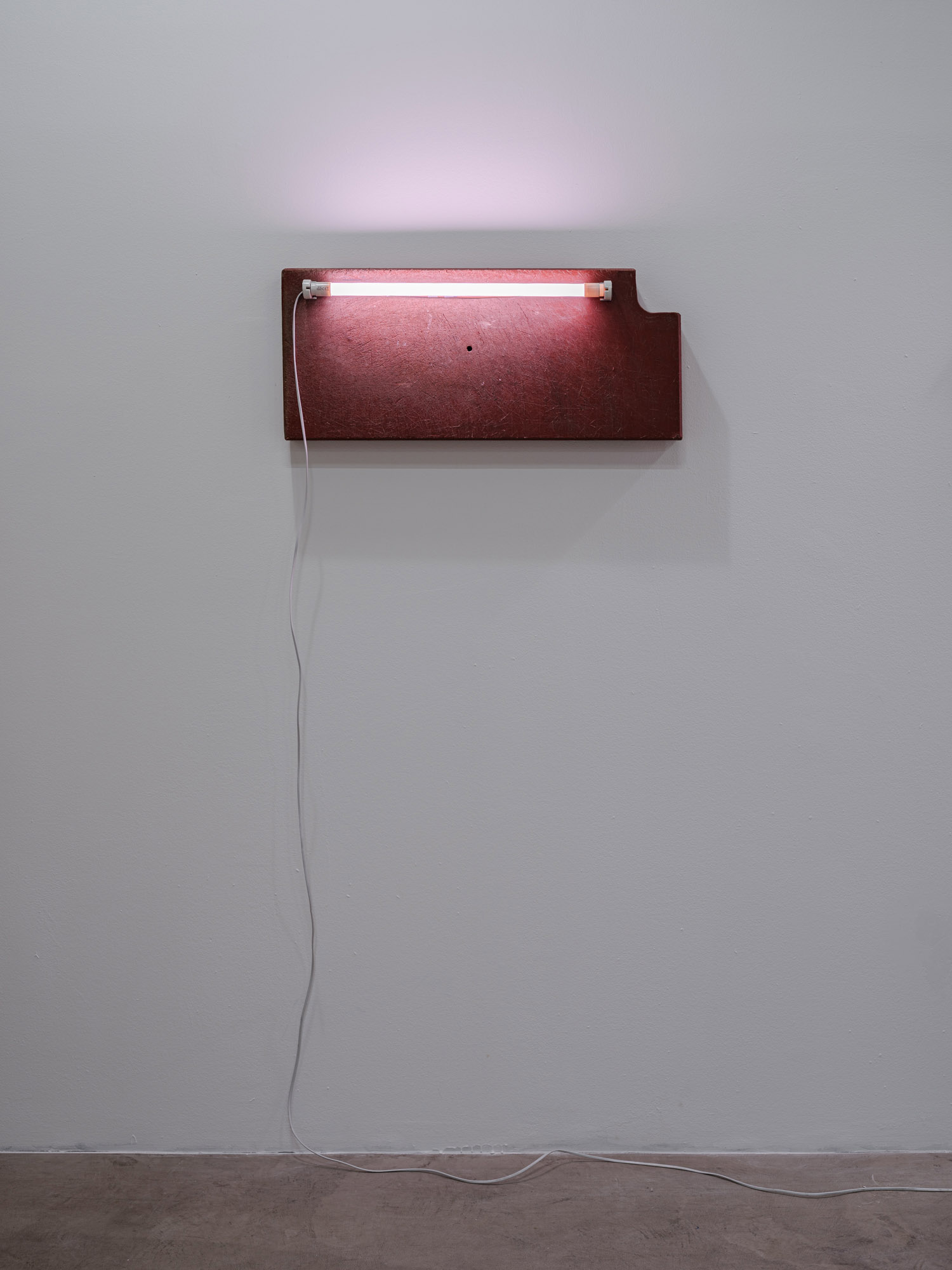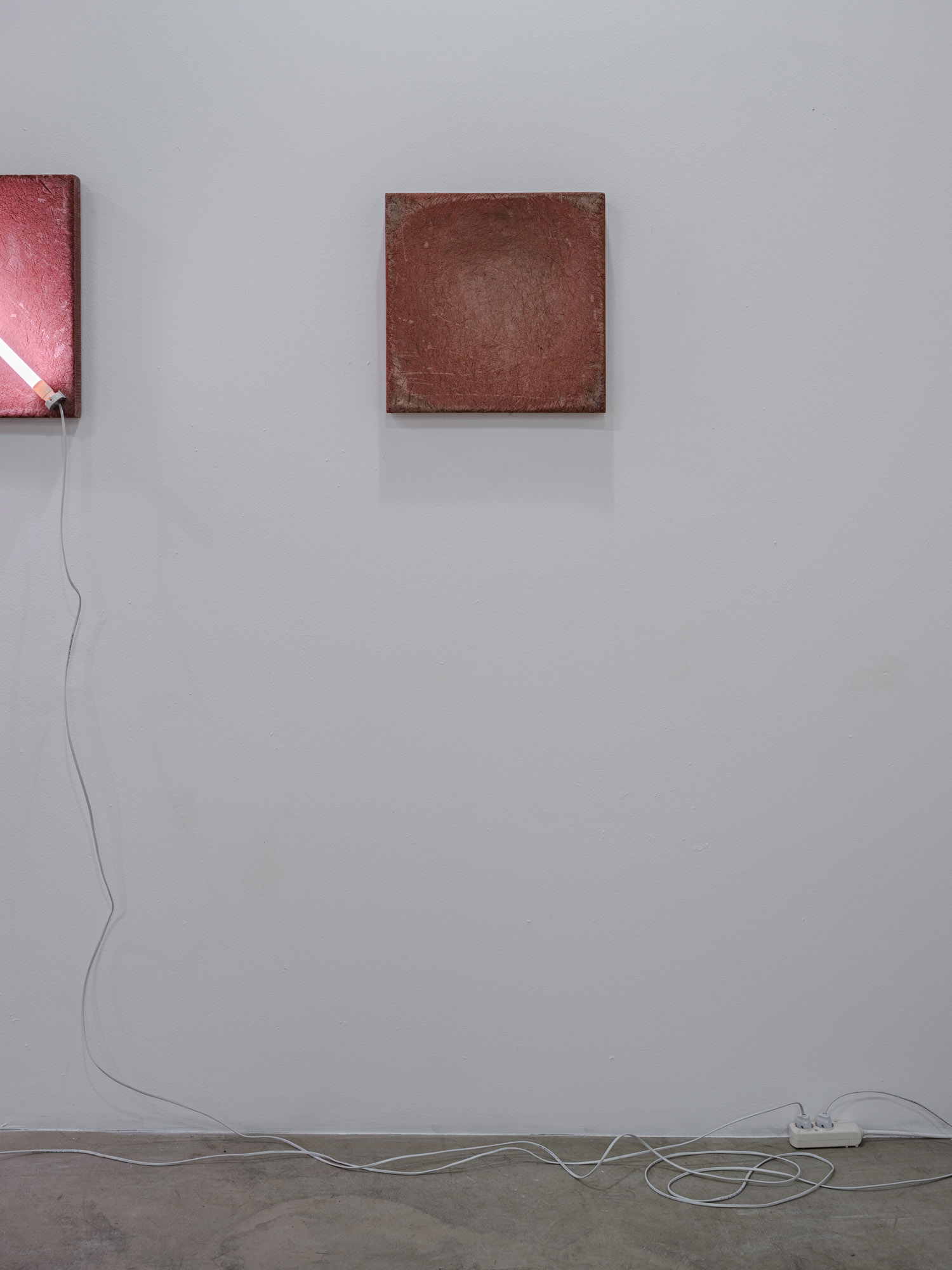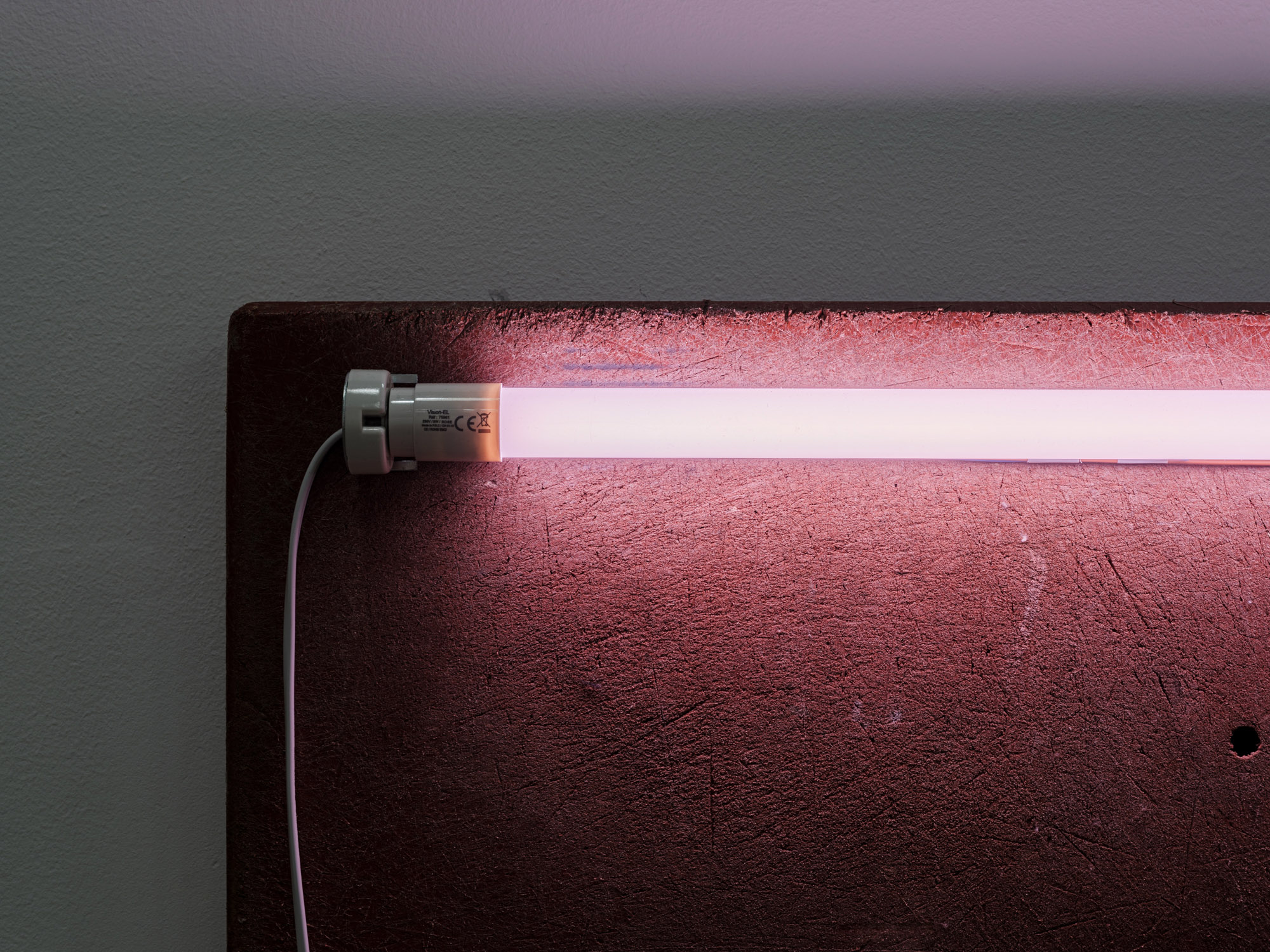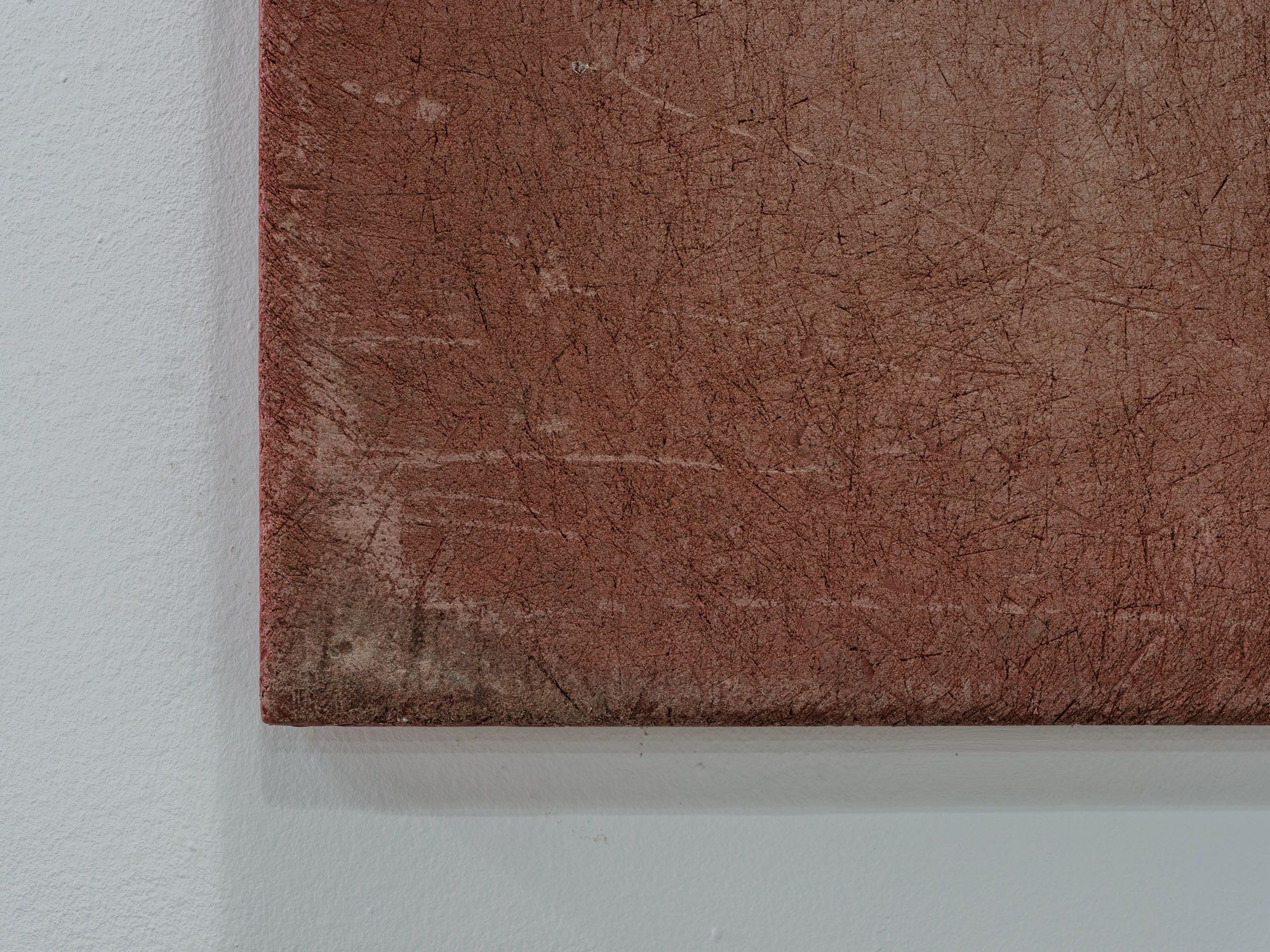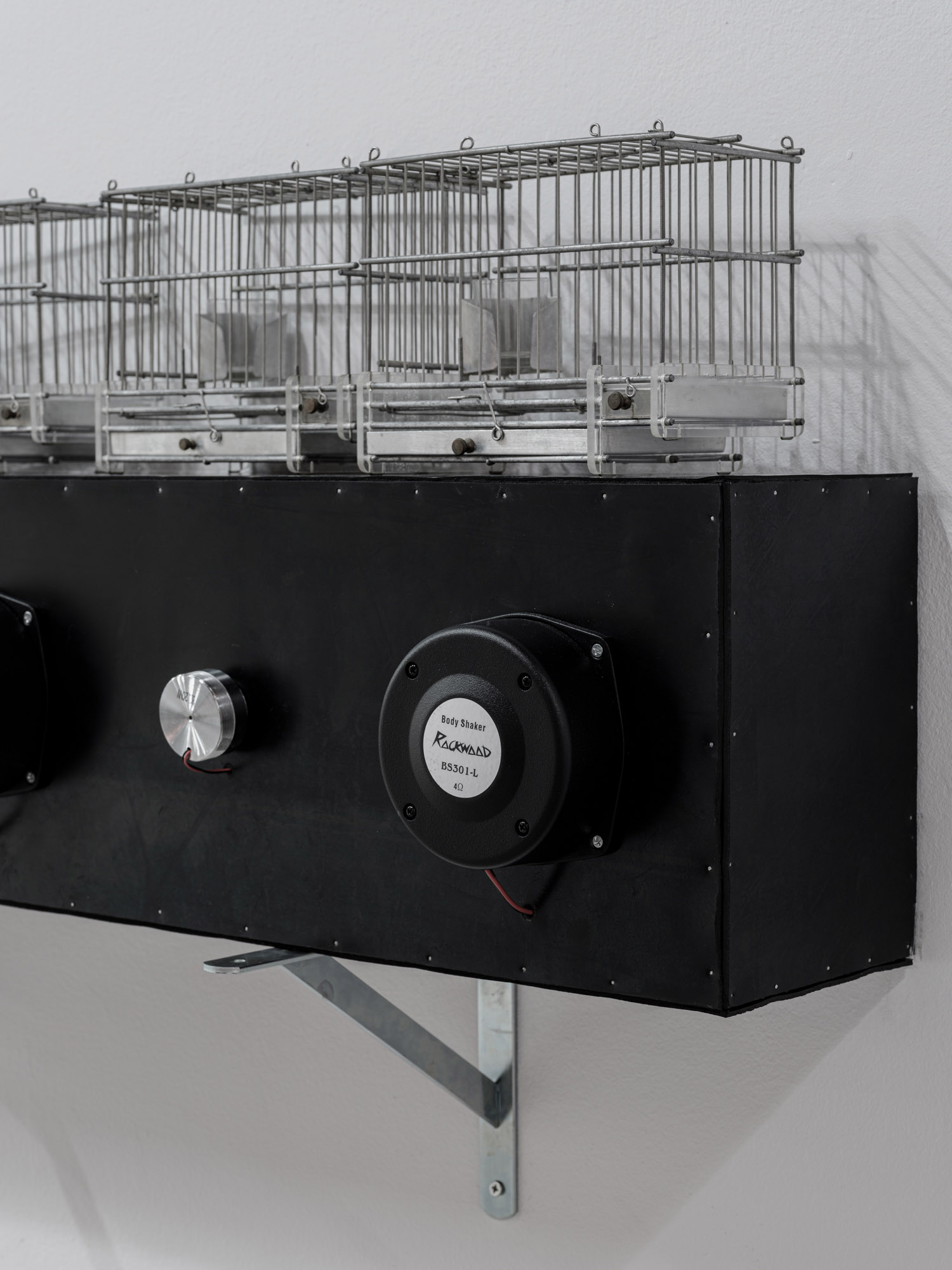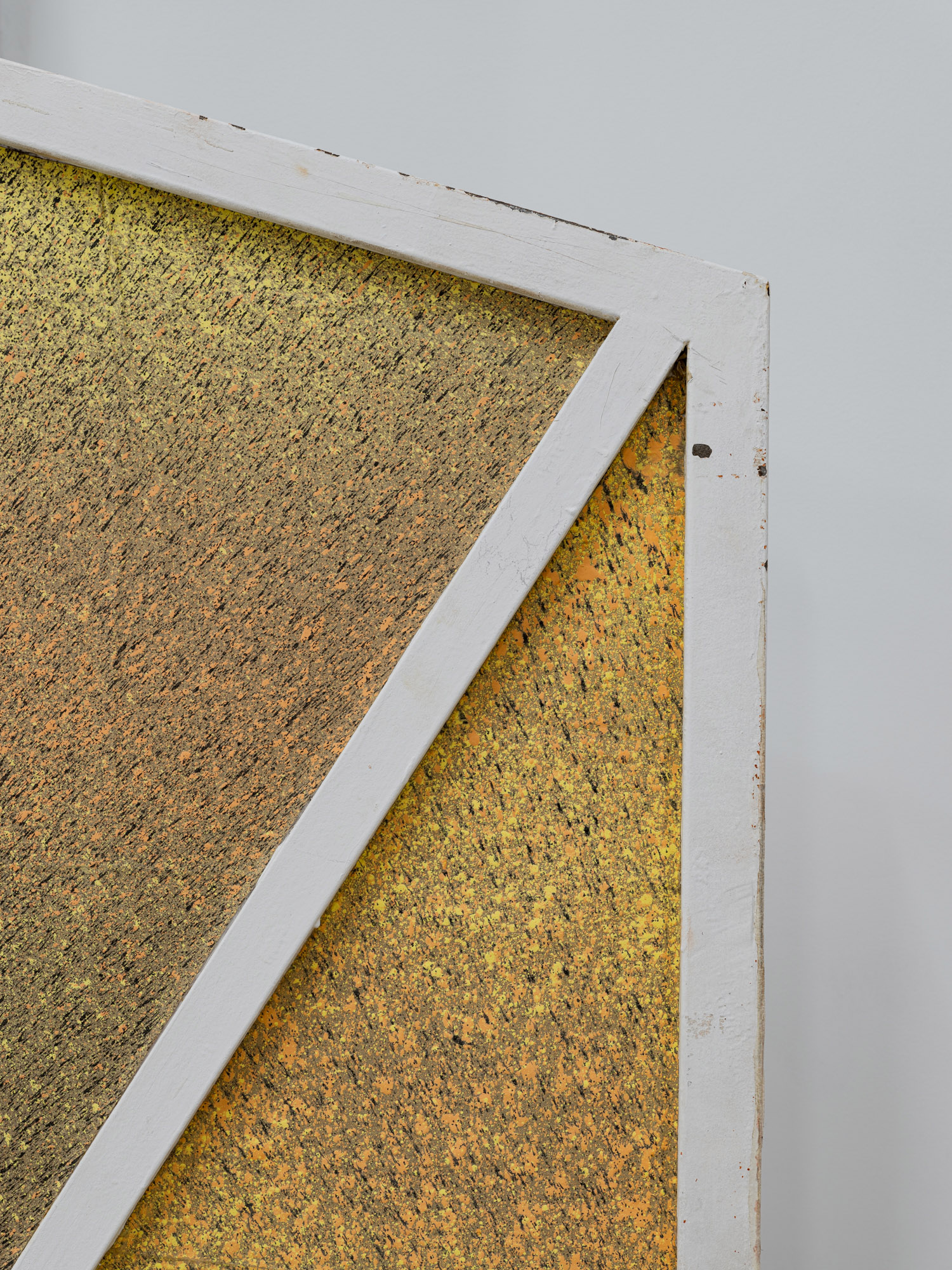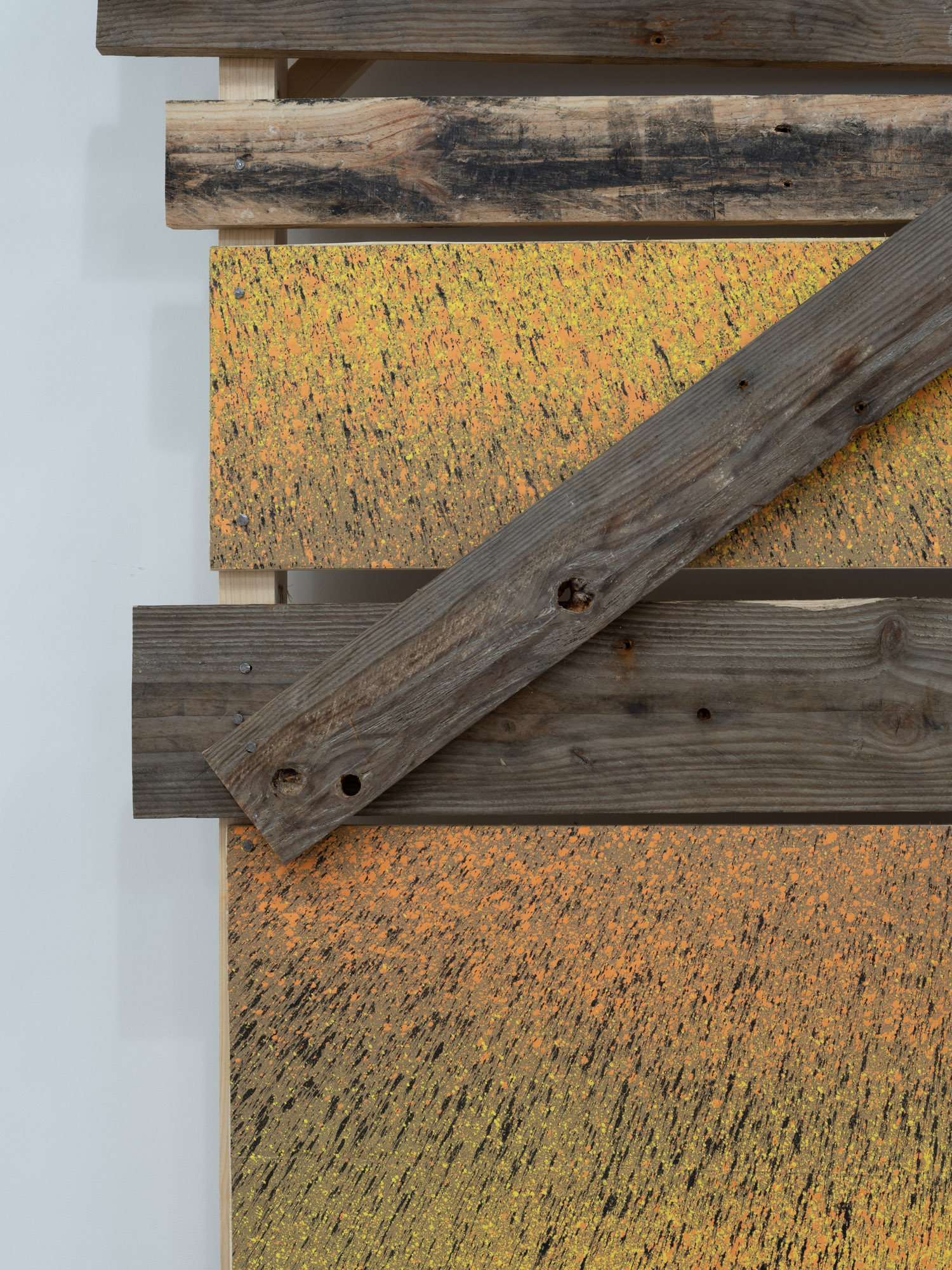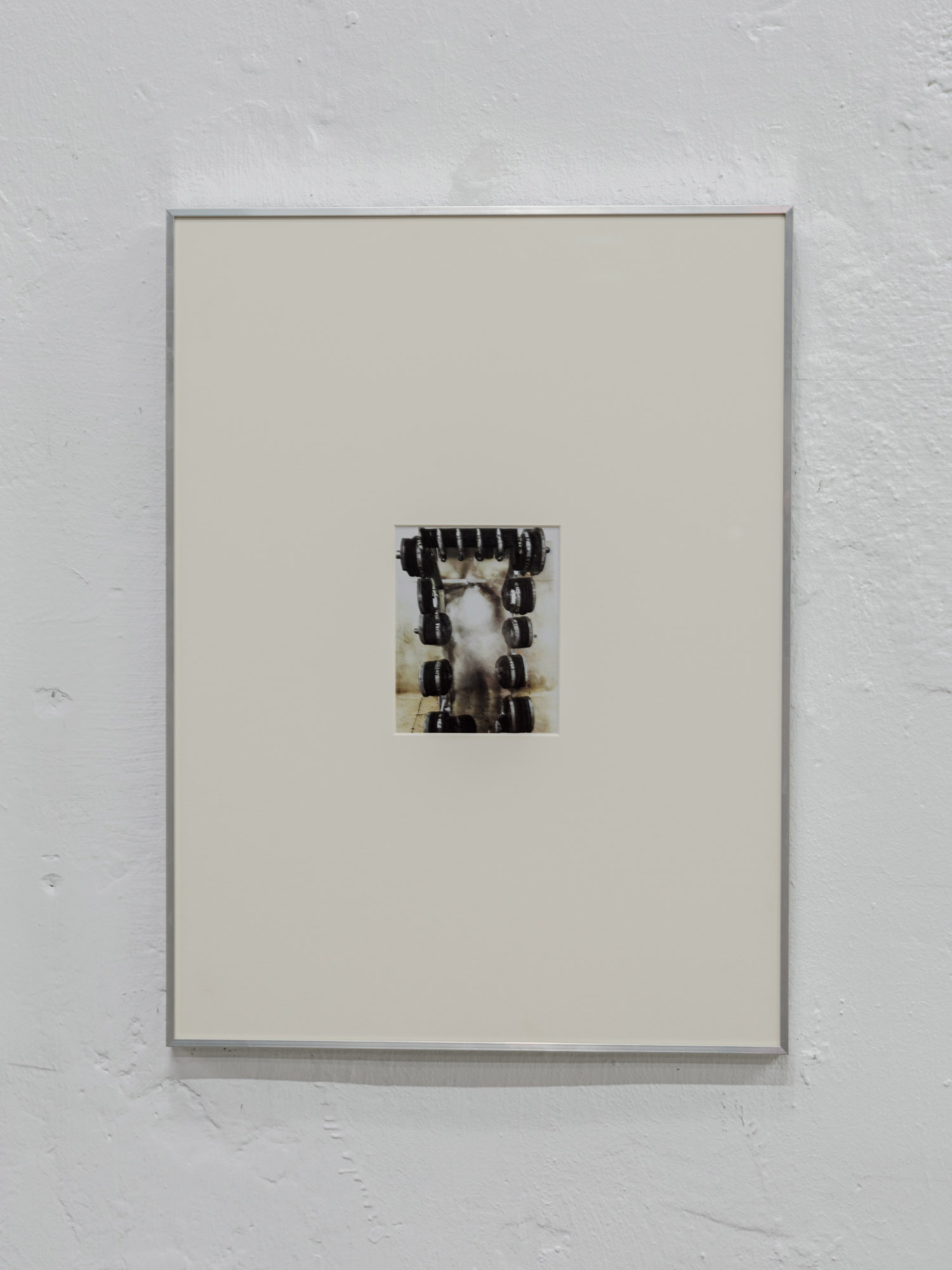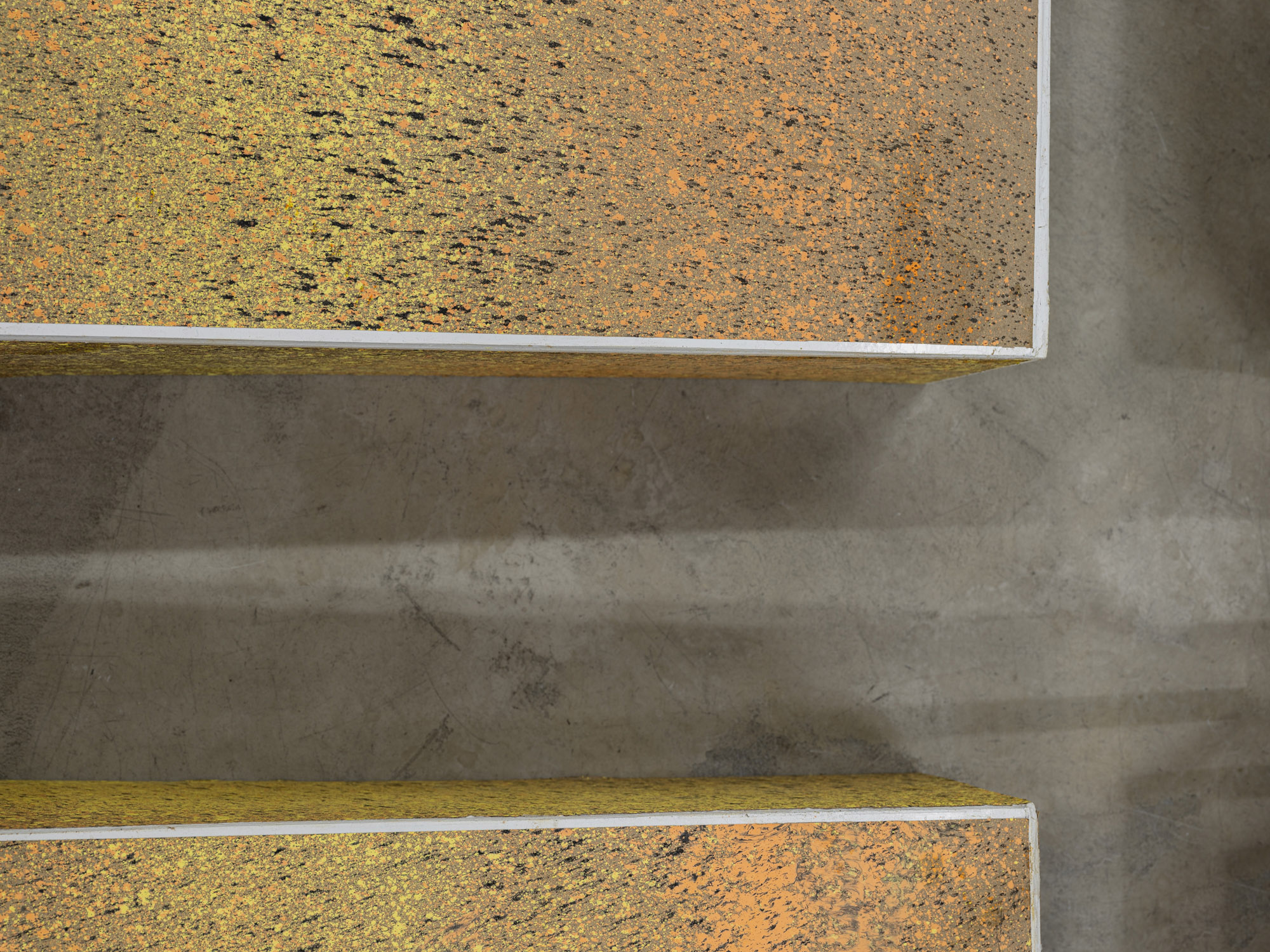Artist: Leto Ybarra
Exhibition title: Neoned
Curated by: Yaby (Beatriz Ortega Botas & Alberto Vallejo)
Venue: The Ryder, Madrid, Spain
Date: January 28 – March 18, 2023
Photography: Pablo Gómez Ogando / All images copyright and courtesy of the artist and The Ryder, Madrid/London
Neoned addresses the relationship between masculinity, theatricality, absence and the modulations of visibility. While the theatrical has historically been located in a visual intensification, Leto Ybarra is interested in how hegemonic masculinity is sustained through the methodical unfolding of a repertoire of theatrical strategies that operate almost invisibly. The image of a golden eagle flying with a baby chamois clutched in its claws, shot by Félix Rodríguez de la Fuente, is a landmark in the history of nature documentaries. But the shot did not document a fortuitous hunting scene, it was a fabrication: the prey was already dead. It had been gutted, emptied and stuffed with paper to lighten its weight and allow its alpha predator to hold it during the epic flight. Elevated above the room, an antique eagle-shaped kite is folded over the faces of a translucent plastic cube backlit by light inside it. The sustaining and circulation of masculinity through visual tricks, the act of emptying, synthesis and access to devices of production of realism articulate the entire exhibition.
The works take as their starting point some of the manipulations to which Félix Rodríguez de la Fuente resorted in the filming of his most popular productions, as well as the dramatic spaces he constructed and his obsession with raw meat as the essential food of the masculine, in order to revise this association from a butch perspective. The repeated blows of a butcher’s knife have been deforming and sinking the surfaces of the butcher’s boards arranged on the wall, covering them with marks and giving them an emotional, processual and physical charge that visually points towards material abstractions. The remains of fat and blood have faded in colour and the pink light tubes turn them red again —this type of light is normally installed in butcher shop counters to give the product a fresher and more vivid colour, one closer to the expectations created around its real appearance.
In 1970, Robert Morris participated in the exhibition Spaces with a proposal between sculpture and environment: four enormous industrially manufactured cubes covered with slopes of soil planted with trees that built a synthetic landscape that was at the same time walkable. Leto Ybarra reproduces this project on a smaller scale that allows us to see it in its entirety, incorporating the gardened slopes into the structural volume of the fibreglass polygons and covering them with mountain paper. This type of paper is used in models and dioramas to simulate a rocky, arid and hard background, and it alludes to landscapes linked to masculinity and romantic tropes of the encounter between man and nature. Its surface made through drippings produces both space and flatness, an impenetrable domain that rejects realistic representation and speaks of gender codes and legibility. The four volumes schematize a natural environment by flattening, synthesizing and abstracting it into non-habitable planes, restricting it to the visual sphere. The inoperable doors that stand alongside, covered with the same mountain paper, also emphasize superficiality, uninhabitability and the denial of access.
Continuing with the limits and possibilities of the relationship between space, identity and expression, another piece has four empty exhibition cages that vibrate due to the effect of a system of bodyshakers, loudspeakers modified to transform low frequency sounds into oscillation, used in simulators and video games to recreate a physical experience of reality – usually environments of action, speed and violence. The sound of the piece, produced by Rosa Noviello, introduces the song of the lyrebird, capable of imitating with verisimilitude the noises of its habitat, especially noises of construction and impact, strident and metallic. This soundtrack functions as a ventriloquisation of a space under construction, and underlines the interdependence between speech and context. The voice of the lyrebird is the direct result of the accumulation of all the noises of a foreign environment that fall within its range and, at the same time, its song constructs a space-habitat from invisibility and absence.
Both pornography and bodybuilding photography arrange bodies in postures of maximum visuality while concealing their mechanisms of image production. Gestures and movements are calculated to ensure that the plot flows and the visual product unfolds within a controlled space – the podium, the gym, the bed, the shower, etc. A chequerboard composition also suggests moves and predetermined patterns in relation to bodies and plots linked to masculinity: the board is made of small collages with rubber bands that indicate flexing and a rehearsed construction of the body, but also sex, condoms and bodily secretions. The butch aesthetic of the body culture of the eighties and its parallelism with the ‘disco tits’ of gay culture propose a new relationship with hardness and muscle. Leto Ybarra inscribes themself in the historical relationship described in literature and poetry between gay desire and natural space, especially through the use of metaphors that relate the body to the landscape –body hair as grass or forest and pectorals as tall, broad mountains. Using an artificial intelligence app, they feed fragments of their poems to it and the program returns them as images of bodies with swollen, hypermuscled chests, disappearing amongst the devices that construct them.
LETO YBARRA
(b. 1991, Madrid, Spain). Leto Ybarra is artist, poet and co-founder of the Art and Poetry project Juf in Madrid. Their work has been shown and recited at Luis Adelantado (Valencia, 2022), Gasworks (London, 2022), La Casa Encendida (Madrid, 2022), Cordova (Barcelona, 2021), CentroCentro (Madrid, 2020), Intersticio (London, 2020), Haus Wien (Vienna, 2020), among others. They have been artist-in-residence at Gasworks (2022), Tabakalera (2022) y Matadero Madrid (2023). In 2021, they published Fantasmita eres pegamento with Caniche Editorial.










